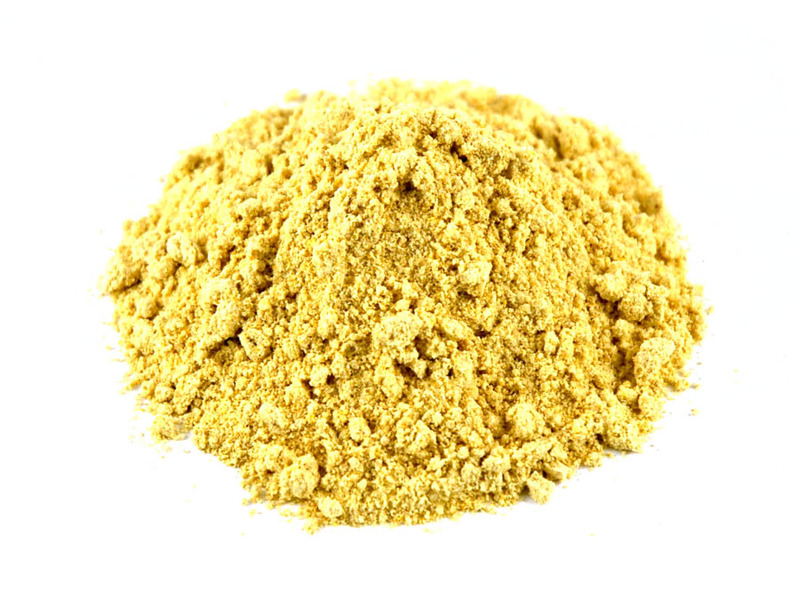Description
Fenugreek seeds are tiny, bitter, dicotyledonous seeds of herb fenugreek. Toasted gently, they exhibit strongly aromatic and pungent flavor. Traditionally, fenugreeks have been found use to cure digestive problems and to improve breast milk secretion in the nursing mothers.
In the botany, fenugreek is a small annual leguminous herb belonging in the fabaceae family, genus: Trigonella. Scientific name: Trigonella foenum-graecum. Some of the common names of herb fenugreek include greek-hay, mehti, bird’s foot, greek-clover, etc.
Fenugreek is native to the sub-Himalayan plains of Indian subcontinent, and today, it is widely grown all over the southern and Mediterranean Europe, Middle-East Asia and northern African regions.
Fenugreek grows up to about 1-2 feet in height with light green color tri-foliate leaves and white flowers. It bears long, slender, yellow-brown pods containing about 10-20 golden-yellow color seeds. Its seeds are small, hard, and resemble tiny, multi-faceted stone-pieces. Raw seeds have maple flavor and bitter taste; however, their taste becomes more acceptable once they gently roasted under light heat.
Health benefits of fenugreek seeds
- Fenugreek seeds are rich source of minerals, vitamins, and phytonutrients. 100 g seeds carry 323 calories.
- The seeds compose ample amounts of soluble dietary fiber. Soaking them in water softens their outer coat and turns it slimy (mucilaginous). 100 g of seeds provide am 24.6 g or over 65% of dietary fiber.
- Non-starch polysaccharides (NSP) constitute major portion of this fiber content in the fenugreek seeds. Some important NSP’s include saponins, hemicellulose, mucilage, tannin, and pectin. These compounds help lower blood LDL-cholesterol levels by inhibiting bile salts re-absorption in the colon. They also bind to toxins in the food and help to protect the colon mucusa from cancers.
- NSPs (non-starch polysaccharides) increase the bulk of the food and speed up bowel movements. Altogether, NSPs assist in smooth digestion and help relieve constipation ailments.
- It has been established that amino-acid 4-hydroxy isoleucine in the fenugreek seeds has facilitator action on insulin secretion. In addition, fiber in the seeds helps lower rate of glucose absorption in the intestines, and thus help regulate blood sugar levels. Fenugreek seeds are therefore one of the recommendeded food ingredients in the diabetic diet.
- The seeds contain many phytochemical compounds such as choline, trigonelline diosgenin, yamogenin, gitogenin, tigogenin and neotigogens. Together, these compounds attribute for the medicinal properties of fenugreeks.
- This prized spice is an excellent sources of minerals like copper, potassium, calcium, iron, selenium, zinc, manganese, and magnesium. Potassium is an important component of cell and body fluids that helps control heart rate and blood pressure by countering action on sodium. Iron is essential for red blood cell production and as a co-factor for cytochrome-oxidases enzymes.
- It is also rich in many vital vitamins that are essential nutrients for optimum health, including thiamin, pyridoxine (vitamin B6), folic acid, riboflavin, niacin, vitamin A, and vitamin-C.
Medicinal uses of fenugreek seed
- Its seeds have been used in many traditional medicines as a laxative, digestive, and as a remedy for cough and bronchitis.
- If used regularly, fenugreeks may help control cholesterol, triglyceride as well as high blood sugar (glycemic) levels in diabetics.
- Fenugreek seeds added to cereals and wheat flour (bread) or made into gruel, given to the nursing mothers may increase breast milk production.
Selection and storage
Fenugreek seeds are readily available in the spice stores all around the year. One may find different forms of seeds such as whole seeds, powdered or vacuum packed paste in these stores.
Choose whole seeds from authentic brands. The seeds should feature bright golden-yellow color, hard and exude delicate maple flavor. Avoid old stocks as they may infected by fungal mold and out of flavor.
Store whole seeds in airtight glass container and place in a cool, dark place where it can stay fresh for several months. Powdered or paste form of fenugreek, however, should be kept in the air-sealed packets and placed inside the refrigerator.
Culinary uses
Traditionally, fenugreek seeds are being used in a wide range of culinary recipes, especially in spice mix. The seeds either in the forms of whole seeds, sprouted, powder, sauce or as paste used in a variety of savory dishes in many parts of Middle-East, India, Mediterranean and Central Asian regions.
The seeds should be added in small quantities in food since they possess strong aroma and bitter taste. Dry fry under light heat in order to mellow their flavor.
Here are some serving tips:
- Fenugreek is one of the chief ingredients in Indian curry and masala powders.
- Small quantity of sprouted seeds added to vegetables and lentil dishes.
- Fenugreek greens, known as methi, either fresh or dried, is one of the prominent leafy-greens featuring in India, Pakistan, and Persian cooking with spinach, potato (aaloo-methi), carrots, etc.
- Sprouted fenugreek seeds are used in salads, paste, dips, fillings, etc.
Safety profile
Excess intake of fenugreek seeds by pregnant mothers would pose premature childbirth risk in them.




Reviews
There are no reviews yet.